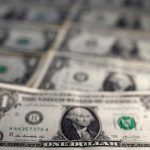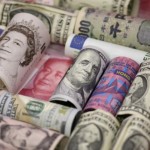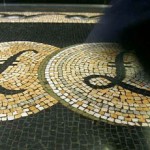Inflation, asset and consumer prices
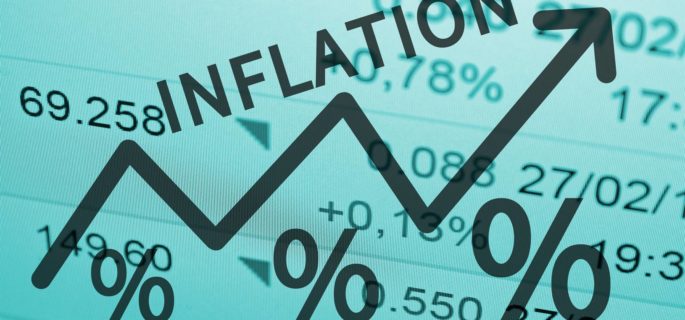
“The Fed finds itself between a rock and a hard place: either it keeps inflating or the whole confidence-based valuation of financial assets collapses. Either it raises interest rates or the dollar collapses.”
There has been occasional speculation about what happens to asset values in a hyperinflationary collapse. The basis of the question has recently become suddenly relevant, because consumption in America and Britain has been stimulated with unprecedented monetary inflation aimed at consumers, and been met with limited supply, leading to strongly rising prices across the board.
In short, unless urgent action is taken, the possibility of a hyperinflationary outcome has become a possibility. The only alternative is to stop monetary inflation and thereby deliberately crash the global economy.
Along with other central banks, the Fed is trapped. We will assume that rather than face this reality, governments and central banks will continue with their money printing until both their fiat currencies and financial systems face collapse. All precedent points to this choice.
That being the case, an examination of how a collapse in the purchasing powers of fiat currencies is likely to affect asset and consumer prices is timely. This article draws on theories of money as well as empirical evidence in search of some answers. The answers will surprise and discomfort many of its readers.
Introduction
It is a common perception that in inflationary times financial and tangible assets afford protection from monetary debasement. Instead of rapidly escalating, so long as the consequences of inflation are contained as they have been since the early 1980s, non-fixed interest investments have been good inflation hedges. But what happens to asset prices if inflation is not contained and escalates?
To answer this question, we must first define what we mean by contained inflation. Interest rates normally put a brake on the loss of a currency’s purchasing power, limiting inflation to a cycle of credit. In other words, the market must be prepared to operate and allow interest rates to function as compensation for the consequences of monetary and credit inflation. Clearly, this condition does not apply today because central banks supress interest and bond rates as well as any evidence of the bank credit cycle. Furthermore, both foreign holders of a currency and its domestic users must be satisfied with monetary conditions to broadly retain their exposure to it. In the case of the dollar, which is the currency that really matters to us all, that has been undoubtedly true so far. But in these times of rising monetary inflation, there will come a point when the lack of interest compensation for currency debasement will begin to overtly undermine the dollar’s purchasing power, and in the first instance this matters particularly to foreign holders.
It is in this context that a deeper examination of the relationship between assets and the accelerated rate of issuance of state currencies is pertinent. That the rate of monetary expansion has accelerated is no secret; but so far, the probable effects on the purchasing power of the dollar, and also for other currencies aligned with it, have been ignored by investors. Central bankers have been coy on the subject, and by fiddling with the price inflation averages statisticians have buried the evidence. The suppression of the evidence on prices has been an important factor in what is effectively a concerted campaign of disinformation about inflation.
While these conditions have built up for decades, so far, non-fixed interest asset values have still afforded protection for investors’ capital. For the middle classes, the values of their homes, often geared through mortgage borrowing, have risen substantially. The values of their portfolios and pension plans have also benefited hugely. For them, these conditions have been extremely beneficial, which is why central banks have latched onto the wealth effect and are now directing new money into stock markets at unprecedented rates through quantitative easing.
The current state of play for both financial and non-financial assets has led not only to rising asset values but is now fundamental to the economic confidence upon which central bank policies entirely depend. But the problem with confidence as a policy is that it assumes that the crowd must be permanently bullish and that reality must never intervene. Policies backed on little more than perpetual hope must fail.
By admitting for the first time that it might lose tight control of interest rates because of rising consumer prices, last week’s FOMC statement has raised fundamental questions about bullish assumptions. For investors, the smoky clouds of hopium began to clear, revealing an FOMC that might lose control over markets. The initial reaction, which is all we have seen so far, is that short term dollar interest rates rose slightly, discounting a possible rise in interest rates being brought forward. Longer-term rates declined slightly, reflecting the anticipated deflationary effect. And the dollar rallied against other currencies, whose central banks are yet to admit that prices in their bailiwicks are likely to rise more than previously expected.
The initial effect on equity, commodity and precious metal prices was to drive them all lower. We will come on to commodities and precious metals later in this article, but equities will hold our attention for now. They have risen to current levels mainly on the back of the Fed’s $120bn monthly QE, targeted at pension funds and insurance corporations. QE encourages these institutions to increase their investment risk profiles from holding US Treasury and agency debt, substituting them with corporate debt and equities.
Part of the investment chatter is about the need for the Fed to taper QE to address monetary inflation, which oversimplifies the situation. If equities are declining into a new bear market, the Fed will stand ready to increase QE to support equities and cap bond yields, because that is the policy: the planners cannot afford to see investor confidence decline and evaporate. We saw this in mid-March 2020, when in response to a decline in the S&P 500 index of fully one third from mid-February, the Fed cut interest rates to zero and increased QE to $120bn monthly.
If the S&P is on the verge of another move downwards, the rescue starts with interest rates at zero and QE at $120bn monthly. Interest rates cannot be reduced from here. We can rule out negative rates on the basis that that would collapse the $4.5 trillion money market fund business, as well as put the whole commodity complex into permanent backwardation from the money side. If anything, interest rates should rise because of the rapidly escalating threat of a fall in the dollar’s purchasing power. That leaves QE. The Fed can do one or both of two things. It can buy directly into index-tracking ETFs, bypassing pension and insurance funds following the policy of the Bank of Japan, and it can increase the monthly quantities from $120bn.
The obvious flaw in this solution is that the way to stop inflation is to cease inflating the quantity of money, not increase it, which is what QE amounts to. But the Fed finds itself between a rock and a hard place: either it keeps inflating or the whole confidence-based valuation of financial assets collapses. Either it raises interest rates or the dollar collapses.
We are at a critical point for equities, illustrated by peak investment sentiment, and there is no better indicator for sentiment than the extent to which investors are prepared to borrow to increase their profits on the bull tack. This is the message from Figure 1, which is clearly shouting extreme greed and a total absence of fear of losses, always associated with an extreme top and an inevitable collapse to follow.
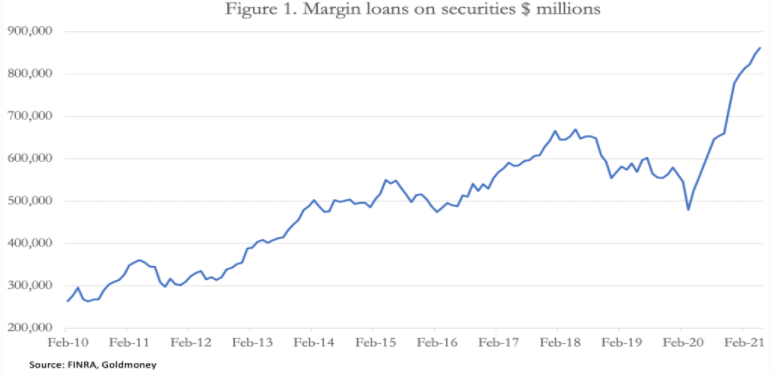
Bullish sentiment is probably higher than we have ever known in our lifetimes, and surely, is similar to the time when bellhops, shoeshine and lift boys were the source of investment inspiration for our grandparents. Perhaps unwittingly, the Fed chose this moment to thow a scintilla of doubt into investors’ minds.
Monetary and market policies from here
The lessons from the past have taught us that central bankers only notice a bear market threat belatedly, so that if the stock market is topping out, it will have to fall significantly before the Fed acts to support it.
Last time was just over a year ago, when from 20 February 2021 the S&P 500 index fell by one third in a month, since when it has almost doubled to recent highs, following the Fed’s intervention. Figure 1 above illustrates how this rescue has provoked an extraordinary madness of the investing classes, and consequently any loss of bullish momentum threatens to collapse the market. On this basis alone and putting aside subjective valuation factors, equities appear to have significant downside. That being the case, foreigners’ holdings of US equities of $11.2 trillion which are only there for the profits will almost certainly be reduced both by valuation and liquidation, adding fuel to the bear’s bonfire. Some of the selling will also flee the currency, putting pressure on the dollar as well, because with foreign ownership of dollars estimated at $31 trillion ($24.7 trillion long term securities plus $6.3 trillion short-term investments and bank deposits), this is a record level of exposure for foreigners, amounting fully to 150% of US GDP. US holdings of foreign securities offsetting foreign interests in the dollar are less than half this figure, with the majority invested in equities.[i]
If the Fed decides to intervene and bolster confidence in the equity market it will face conflicts in its task. With interest rates anchored at the zero bound, they cannot be further reduced. The only substantive option is to increase the scale and effectiveness of QE. Put crudely, support for bond and equity markets will have to be more blatant. But printing money to support financial assets is more inflationary, adding fuel to the inflationary fire. For the Fed to get away with it will require it to persuade the least Keynesian of crowds, foreigners overloaded with dollars, that it can ramp securities markets without undermining the currency. And there is a further problem not being foreseen or given sufficient credence to by monetary planners: the state of the economy itself.
For decades monetary authorities have turned a blind eye to the impoverishing effects on the non-financial private sector of the transfer of wealth through currency debasement. Since the Lehman crisis, independent statistical analysis by John Williams at Shadowstats.com has estimated the dollar to have lost purchasing power at anything between seven and ten per cent annually —now running at over 11%. The biannual analysis by the Chapwood Index (before covid made it impractical to gather data) put the post-Lehman figures closer to 10%. Deflating nominal GDP by these realistic numbers instead of a goal-sought 2% informs us that the US economy has been in a continual slump at least since the Lehman crisis — if not before.
By only seeing the excess money being spent by the government and not accounting for its source — the debasement of the currency — an illusion of prosperity has been created. While the man in the street has only been able to make ends meet by supplementing his income with debt, governments, their agencies, and the investing establishment seem blissfully unaware of the accumulating consequences of continual currency debasement.
An upward kick to the general level of prices now comes from the breaking of the link between consumption and production, the consequence of monetary and economic policies which turned a blind eye to the workings of the division of labour, commonly expressed as Say’s law. By subsidising unemployment and making employment less efficient from an employer’s point of view, production has been removed from the domestic market progressively, and imports have replaced domestic production. And with massive increases in the US Government’s budget deficits in prospect, the US trade deficit will also increase substantially from current levels. Unless, as seems very unlikely, American consumers collectively decide to increase their savings to help finance the budget deficit, rather than continue spending.
Therefore, a looming bear market for US equities will be accompanied by a further and sharply deteriorating balance of payments, against a background of the dollar already being over-owned by foreigners. The only short-term offset would be a sharp deterioration of the dollar’s exchange rate. And what should concern us as much as anything is the position of the Fed, which has ignored the consequences of tying the futures of the stock market and the dollar together, supporting the former by inflating the latter.
The outlook for fiat currencies
The current situation for the dollar is the conclusion of decades of monetary inflation. The dollar’s purchasing power was already falling when it was driven off all remaining connection to gold in 1971. Since then, when the $35 per ounce link was broken, the dollar has lost over 98% of its purchasing power — measured in gold. This elision of values has not become a public issue so far. But clearly, the acceleration in the expansion of the quantity of money in circulation since the Lehman failure, and the further acceleration of it in March 2020 and the abandonment of all monetary discipline in order to support financial markets will almost certainly, eventually, call into question the dollar’s role as a medium of exchange. Unless something is done, the loss of all its purchasing power is becoming a credible outcome.
That “something” is a question to be answered. Clearly, the inflation threat can only be removed if money-printing is stopped. But how do monetary policy planners make this assessment, when they appear to not even understand the link between the quantity of money and prices? How can they pursue an anti-inflation policy if they are not prepared to relinquish control over interest rates, and hand it back to the general public for their collective assessment? We are asking monetary ignorance to be rapidly re-educated to embrace common sense logic and act against the mandate the state has sought and obtained from its electorate.
It will not require a mathematical link between the quantity of money and its purchasing power to reach this unhappy state. With nothing other than fragile confidence in it as backing, foreign actors who do not require to own it in more than nominal quantities can simply reject it. But alternative fiat currencies are also unattractive because they are all linked to the dollar through its reserve status, and the major currencies are also being inflated by their central banks. Figure 2 illustrates the degree to which they have inflated since the position before the Lehman crisis.

In broad terms, the expansion of central bank balance sheets can be taken as a measure of currency debasement. But the alternatives to the Fed and the Bank of England probably have limited appeal to international capital.
For all the reasons stated above, the relative attractions of tangible property, commodities and precious metals as stores of value may be beginning to increase relative to financial assets, even though the values of the former non-financial categories have already increased in the last year. And for those who suspect that fiat currencies are on course for an accelerated rate of debasement, some of them could be emerging as better stores of value than non-fixed interest financial assets.
But by selling down the dollar, foreigners are likely to undermine the entire fiat complex. The links between all fiat currencies and their financial markets will ensure that a substantial fall for the dollar’s purchasing power coupled with a collapse in US equities will infect all currencies and all markets. Precious metal and commodity prices are set to rise in all currencies, and bond yields rise while stock markets decline. It is both fiat currencies and financial asset values that are under jointly under threat.
Asset values in a currency collapse
History, as well as logic, tells us that the best performing asset in a currency collapse is sound money, because that is what eventually replaces state-issued currencies. The basic qualifications for sound money are that it is a medium of exchange commonly accepted by its users, and that its quantity and use are decided by them and not their governments. For millennia, the sound money to which the transacting public always returns is metallic, principally gold, silver and copper. Trusted substitutes are not only acceptable but make for greater convenience. If a government is to operate an effective gold standard, it must issue a currency which can be substituted for coins at the public’s option and for it to hold sufficient gold reserves for its gold substitutes to be credible.
A fuller description of a functioning gold standard is beyond the scope of this article.[ii] What concerns us here is the relative purchasing power of precious metals to fiat currencies during a fiat currency collapse. It is initially conditioned by the fact that fiat currencies are widely held while physical gold, silver or their credible substitutes are not. And when it comes to substitutes, not one central bank offers gold conversion terms for its currency. Gold and silver backed ETFs do not constitute ownership of the relevant metal and being priced in fiat their shares should be viewed as fiat investments.
For these reasons of relatively limited ownership of metallic money, a collapse of fiat currencies leads directly to an increase in purchasing power for gold and silver in terms of exchangeable goods and assets —virtually everything falls in price against them. This is confirmed by empirical evidence. Stefan Zweig, the Austrian author who lived through the European inflations in the early 1920s, recounted how $100 could buy six-story family homes in a fashionable street in Berlin — at the prevailing gold standard of $20.67 to the dollar, this was the equivalent of less than five ounces of gold.[iii]
There is a crucial difference between Berlin in 1922-23 and the situation that is evolving today. Foreign currencies acting as credible gold substitutes existed. And partly due to Germany’s booming export trade and partly due to capital inflows taking advantage of the currency collapse, dollars and other currencies were imported in large quantities. None of this is available today, which in a currency collapse is bound to raise the purchasing power of scarce sound money —gold and silver — even more than experienced in Germany nearly a century ago.
There is the further disadvantage of investing in physical property to escape currency debasement, and that is the cost of maintenance and the impossibility of rents keeping pace with a currency decline. Under these circumstances, residential property becomes a liability, and not an asset.
Earlier in this article, it was stated that the conditions of contained monetary inflations have fuelled property prices sufficiently to offer some recompense for a currency’s debasement. That benefit disappears under hyperinflationary conditions.
But measured in depreciating currency, there is still a value for a home’s utility. The factor setting it is the desire for it relative to other goods and the availability of property finance. In the conditions of a currency collapse, the increase of the quantity in circulation is likely to be small relative to loss of purchasing power (this phenomenon is further explained below). A million-dollar house might not increase in its exchangeable value by much measured in declining currency because of this limitation. Furthermore, what small monetary resources that exist are likely to be redirected to human subsistence, the acquisition of food and energy vital to life, whose price potentials are also commented on below.
While initially acting as a source of funds, financial assets are likely to become valueless dying with fiat. Unlike the world at the time of the European inflations of the 1920s, the ubiquity of the currency collapse means that the foreign interests that bought assets on the cheap with sound and pseudo-sound money, thereby giving them value, will be almost entirely absent.
The rise in interest rates that accompanies a fiat currency collapse will only stop with a Volker-style increase to 20% if the currency is stabilised. While we all desperately wish for such a backstop to work again, the conditions today appear to rule it out. Having tied their currencies to financial asset values, the Fed and other central banks would be required to free them from this obligation and take responsibility for deliberately triggering a market and economic crash that would make the 1930s look like a teddy-bear’s picnic.
We must accept that allowing interest rates to rise without limitation is a de facto acceptance of market economics, which was just possible in 1980, but 40 years of intervention and ever tightening regulation since then makes it inconceivable today. And as a marker of political will —or rather lack of it — social and moral conditions have deteriorated to the point where politicians, institutions and even businesses are unable to challenge “wokeness”. As an economic indicator, humanity has fallen into a similar gutter of behavioural economics as seen in Germany in the great inflation. Stefan Zweig again:
“Even the Rome of Suetonius had never known such orgies as the pervert balls of Berlin, where hundreds of men costumed as women and hundreds of women costumed as men danced under the benevolent eyes of the police. In the collapse of all values a kind of madness gained hold particularly in the bourgeois circles which until then had been unshakable in their probity.”[iv]
For sure, things are different today. But the loss of moral compass is a little observed indication of the true state of monetary and economic affairs.
Consumer prices
A collapse in its purchasing power will not be accompanied by an offsetting increase in the quantity of money. This unexpected state of affairs stems from a rejection by the public of fiat currency as a medium of exchange in the later stages of its collapse. It was for this reason that between April 1923 and the following November, Germany’s paper marks in circulation increased from 6,546 X 1012 to 400.3 X 1018, an increase of 61,152 times. At the same time, prices measured in paper marks increased from 5,825 to the gold mark, to 522.3 X 1012, or by 90 billion times.[v] Therefore, the limitation of an increase in the quantity of money will not stop prices rising far faster, or described for greater comprehension, the purchasing power of a fiat currency falling.
Admittedly, the example above taken from Germany in 1923 covers the time when the paper mark finally collapsed, having been rejected by the public as money. It is hoped that the US Treasury will stabilise the situation for the dollar before it finally collapses by deploying its gold reserves, said to be over 8,000 tonnes. Assuming its gold exists, the US Treasury can introduce a credible gold standard before the dollar’s purchasing power disappears entirely. However, as its purchasing power accelerates in its fall, it is sensible to assume that dollar prices of consumer essentials will rise more quickly than the expansion of the quantity of dollars available would suggest. This will lead to significant hardship for almost everyone living in America. And to the extent that other currencies will suffer a similar fate, to their users in other jurisdictions as well.
Under these conditions, consumer demand will be restricted to the essentials to sustain life. Businesses producing non-essentials, particularly services, will cease trading, and if fiat currencies sink to nothing, even producers of essential goods will cease trading as well, at least until a means of exchange returns. Not only will the lack of supplies of goods drive the purchasing power of the dollar even lower, but economic production will collapse entirely.
Summary and conclusion
This article commenced its thesis by pointing to the evidence of the overvaluation of financial assets, stoked by central banks issuing currency for the explicit purpose of ensuring they continue to rise in value. And it later pointed out the similarities between today’s wokeness with the deterioration of public morality in the Germany of 1923 as a social indicator of the state of monetary and economic conditions. Measured in these terms, we are not yet in the state of debauchery recorded in Berlin at the time the paper mark collapsed, but undoubtedly, we are edging closer to it.
Much has yet to transpire on our hyperinflationary journey. Foreign disinvestment from an over-owned dollar has yet to begin. But we can now sense that price inflation is going to be the destabilising factor. Central banks have chosen to downplay the effect, but the combination of a global logistical foul-up, sharply higher commodity and raw material prices and a lack of available and employable labour is leading to a lack of product supply to satisfy post-covid consumer demand.
And while the authorities and mainstream media have trumpeted the restoration of economic growth —more accurately it is merely a reflection of the inflation of money supply — the destruction of small and medium-sized businesses away from financial centres has gone unreported. Covid was the coup de grace for small businesses, which had managed to live through a rolling slump, the true annual deflator being several times greater than that of the CPI, dating back at least to the Lehman failure.
Central banks have covered up their failures by inflating financial markets, in the manner of John Law in France 301 years ago. Law printed unbacked livres to keep the shares in his Mississippi venture rising. His bubble collapsed, driving the livre into worthlessness in only six months. The lesson forgotten, central banks, led by the Fed, are repeating John Law’s experiment on a global scale.
It matters not whether markets are at their peak and the bubble is about to burst. There are strong indications, particularly the $900bn of debt leverage behind financial markets, that we are within a gnat’s whisker of the market’s peak. The bubble will burst that is for sure. And when it does, $11 trillion of foreign owned equities will seek an panicked exit, not just from the deflating investment bubble, but from the dollar as well. Interest rates will then be forced to rise as markets take control of everything away from the Fed.
The moment the bubble begins to deflate, investors will awaken from their hopium-induced slumber and events are likely to develop with unexpected rapidity. We must hope that governments back their currencies credibly with gold before they become completely worthless.
[i] See the various tables available from the US Treasury TIC system: https://home.treasury.gov/data/treasury-international-capital-tic-system
[ii] The best work on money is probably Ludwig von Mises’s The Theory of Money and Credit. A brief and contemporary analysis, including a dissertation on the comparison with cryptocurrencies is found here: https://www.goldmoney.com/research/goldmoney-insights/why-the-future-money-is-gold-and-silver
[iii] See Zweig: The world of yesterday. “For a hundred dollars one could buy rows of six story houses on the Kurfürstendamm and factories were to be had for the old equivalent of a wheelbarrow” —Chapter XIII
[iv] ibid
[v] See Tables III and IV in the Appendix to The Economics of Inflation — A Study of Currency Depreciation in Post-War Germany by Constantino Bresciani-Turroni. Figures are monthly averages, and it is worth noting that by mid-November the increase in prices had multiplied even further to 180 billion times, when it was fixed at one trillion paper marks to one (notional) gold mark.
By Alasdair Macleod, www.goldmoney.com
Find more: Contributing Authors










